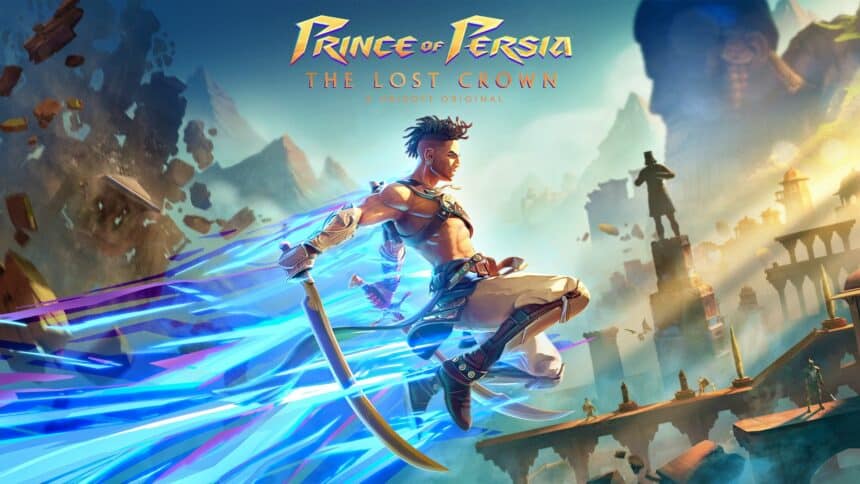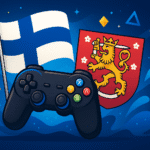It has been 13 years since the last major Prince of Persia game, and it felt like Ubisoft had essentially abandoned the franchise in favor of Assassin’s Creed but the Lost Crown is a triumphant return that brings the series back to its 2D roots and innovates the Metroidvania genre in clever ways. In my Prince of Persia: The Lost Crown review, I’ll talk about why I think it’s one of the best releases of the year.
Sargon The Immortal
In The Lost Crown, players assume the role of Sargon, one of the youngest members of The Immortals, a group of elite soldiers tasked with the protection of Persia. The game introduces the group on a battlefield and quickly make their worth apparent as they play a major role in taking down the opposing army with Sargon finishing off their General. The Immortals don’t have much time to celebrate though, because soon after, Ghassan, the current Prince of Persia is kidnapped and taken to Mount Qaf.

Growing up, I read of Mount Qaf (or Kuh-e-Qaf) myself, and know of the mountain’s unique relation to time and space, existing within its own laws. I think Ubisoft has done a fantastic job of bringing it to life and creatively used a setting that I’ve never seen depicted in popular media. The place is full of cosmic mysteries, interesting lore to read involving King Darius, and NPCs from different factions of the region to meet. The idea of a place working outside our understanding of time, with multiple timelines and beings coexisting is a setting that leverages the Metroidvania-style exploration perfectly.

Sargon is quite likable himself, and while he isn’t as witty or charming as previous protagonists in the series, he does enough to stand out, and his sense of duty allows him to make difficult decisions throughout the story. The characters you meet in the game often share some form of connection to Mount Qaf outside of your quest and following their quests is rewarding both narratively, and mechanically. While Sargon is fun to follow, he largely serves as a vessel for the story, which is something I hope the studio expands upon in future titles.
Qays and Layla
Unlike a lot of recent Metroidvania releases that borrow from the Souls series’ methodical combat, The Lost Crown is closer to hack-and-slash titles like Devil May Cry and Bayonetta. You rely on a mixture of ground and air combos to juggle enemies to maximize damage and crowd control. You can also mix in special powers that deal devastating damage, especially if timed correctly.
It’s refreshing to play a 2D action title that allows for this much freedom, and enough depth to reward skillful play. Sliding under enemies, propelling them into the air, and parrying their attacks becomes downright essential as you make progress. You’re not overpowered either, because a slight miscalculation of the parry window can often result in losing a significant amount of health.
While your arsenal doesn’t grow by much, you’ll learn new attacks, and thanks to the amulet system, there’s room for experimentation. I like to maximize melee damage which is why I made use of Amulets that boosted this stat delivering massive damage. You can also upgrade the different amulets you find, which makes supposedly “lower” value amulets feel powerful, especially considering they take up fewer slots.
Boss battles actively challenge your combat knowledge, and I had a blast learning their patterns. Some of the major bosses let you retry from the spot, which is a welcome addition, but I did find running towards some of the mini-bosses a bit annoying. I’m not sure why this system isn’t consistent between both boss types, but it’s never too bad.
Overall, the combat offers enough depth to sink your teeth into, and while it never reaches the heights of something like Devil May Cry, there’s enough here to reward those looking to improve and pull off crazy combos.
Mount Qaf
Combat is just one part of the Prince of Persia experience, and The Lost Crown is a massive playground for those looking for a platforming adventure. Sargon starts with a basic traversal moveset, but that slowly grows with new time powers that let him dash through the air, double-jump, and more. All of these abilities are integrated into the platforming puzzles, and each area is filled with exciting ones that vary in difficulty.

I never felt as if I was doing the same thing over and over, which is what a good platformer should feel like. Yes, some of the traps are found consistently throughout Mount Qaf, but each area introduces a new atmosphere and obstacles that the traps leverage meaningfully.

Mount Qaf is a joy to explore, with hidden rooms, secrets, puzzles, and treasures to find. While there were instances where I didn’t know where to go next, revisiting early inaccessible areas eventually led me to the next main area.
The game also lets you take screenshots of any section, which you can view from the map. This is an incredibly helpful mechanic that makes exploration all the more accessible. It’s also a fairly lengthy title, and it’ll take you quite a bit if you’re looking to explore every single part of the game.
Presentation
Prince of Persia: The Lost Crown looks fantastic, and uses the 2D perspective with grace. This isn’t the studio’s first rodeo, and Ubisoft Montpellier is known for some excellent 2D adventures that boast fantastic art styles. The Lost Crown looks like a Prince of Persia game and retains respect for the symmetric Persian architecture and a sense of wonder in its towering statues and complex contraptions.

This isn’t a high-budget AAA title, and I hope that gamers and developers are more willing to give games like this a chance, because we really need more games like this. It’s a technically sound title that runs great on practically every platform, including my Steam Deck, and it has a fantastic handpainted art style that blends 2D and 3D effortlessly. The character portraits are beautiful, and while I would’ve liked some minor animations in the dialogue, I’m sure it would’ve come at a cost of quality.

The soundtrack on the other hand feels a bit subdued. It’s better used during cutscenes, and boss battles, but feels largely absent during exploration and combat which make up the bulk of the experience. A few boss battle tracks are excellent though, and there’s a particular track that goes toe to toe with some of the epic music of the 3D trilogy.
Verdict
Prince of Persia: The Lost Crown revives the series in a truly spectacular fashion, and is one of the best games of 2024. As someone who has a hard time committing to Metroidvanias, The Lost Crown pulled me in with its excellent combat, engaging platforming, and gorgeous art direction. If this is the direction for the series going forward, I’m all for it and hope Ubisoft Montpellier remains at the helm.

What did you think of our review of Prince of Persia: The Lost Crown? Share what you think about it in the comments below.
This review is based on the PC version of Prince of Persia: The Lost Crown. The key was provided by Ubisoft.











